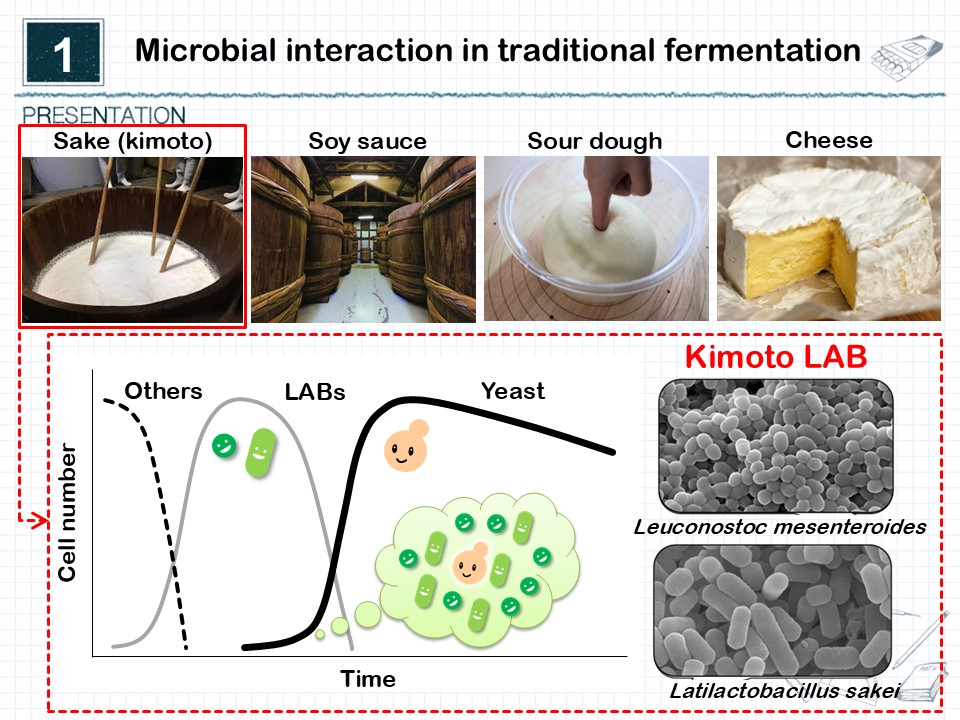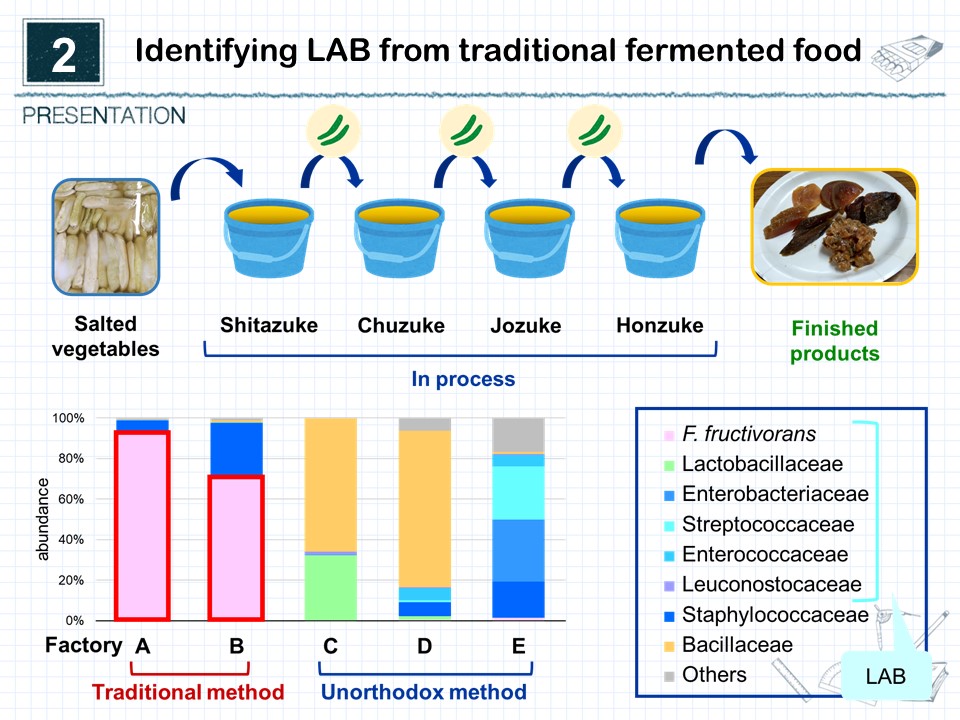Traditional fermented foods around the world have been passed down and nurtured over long histories. They are not made up of a single microorganism, but rather by a “microbial society,” a complex system in which diverse microorganisms coexist. Long before the existence of microorganisms was known, people honed their fermentation techniques relying on experience and intuition, passing down the methods across generations. By preserving such traditional methods, the microbial ecosystem has been stably reproduced, and the continuous stable production of fermented foods has been achieved, which is truly remarkable. Understanding the fundamental principles of food fermentation is expected to provide clues to unraveling how microbial ecosystems on Earth are structured.
In the production of traditional fermented foods, not only diversity but also common processes can be recognized. In many cases, lactic acid bacteria first ferment the raw materials, followed by alcoholic fermentation by yeasts from the environment (Fig. 1). This commonality suggests the existence of basic principles that support food fermentation. In our research laboratory, we have focused on the interaction between lactic acid bacteria and yeast in the traditional sake-making method called “kimoto”. As a result, we discovered a symbiotic and interactive relationship between microorganisms, where lactic acid bacteria inhibit the alcohol fermentation by yeast. Furthermore, we have also focused on traditional local foods, such as narazuke, which had not been extensively studied as fermented foods, and successfully identified the microorganisms involved (Fig. 2). This marks an important first step in introducing a scientific perspective to traditional fermented foods. In this way, we aim to uncover unexplained fermentation phenomena and expand the possibilities of food fermentation.


【Related Papers】
- M. Yoshioka, Y. Masuda, M. Mori, and D. Watanabe*; Heritage sustainable lactic acid fermentation in a byproduct of sake making; Res. Sq. (preprint) https://doi.org/10.21203/rs.3.rs-5456531/v1 (2025)
- D. Watanabe*, M. Kumano, Y. Sugimoto, and H. Takagi; Spontaneous attenuation of alcoholic fermentation via the dysfunction of Cyc8p in Saccharomyces cerevisiae; Int. J. Mol. Sci. 25(1): 304 (2024)
- D. Watanabe and H. Takagi*; Yeast prion-based metabolic reprogramming induced by bacteria in fermented foods; FEMS Yeast Res. 19: foz061 (2019)
- D. Watanabe*, M. Kumano, Y. Sugimoto, M. Ito, M. Ohashi, K. Sunada, T. Takahashi, T. Yamada, and H. Takagi; Metabolic switching of sake yeast by kimoto lactic acid bacteria through the [GAR+] non-genetic element; J. Biosci. Bioeng. 126(5): 624-629 (2018)
